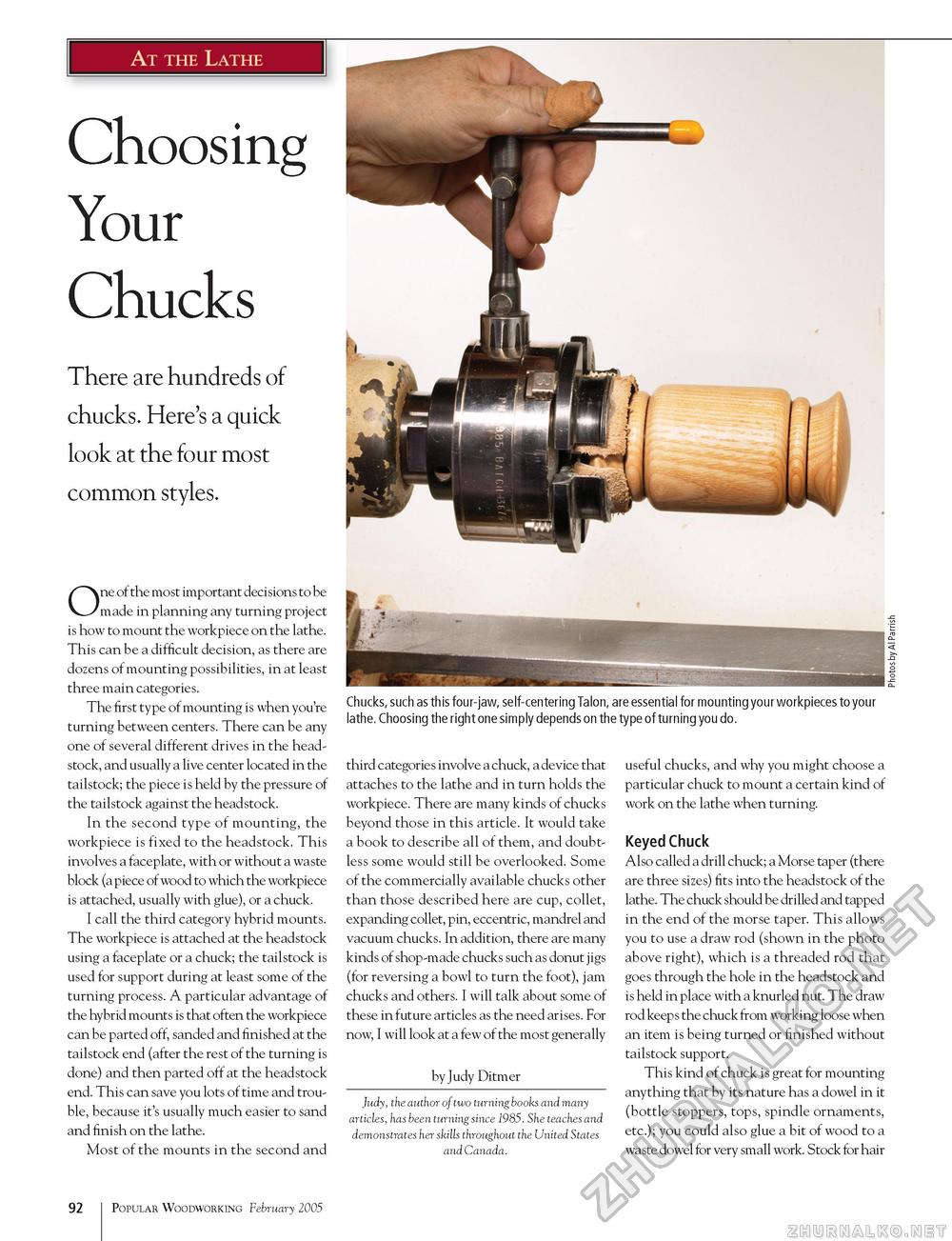Popular Woodworking 2005-02 № 146, страница 97
At the Lathe Choosing Your Chucks There are hundreds of chucks. Here's a quick look at the four most common styles. Chucks, such as this four-jaw, self-centering Talon, are essential for mounting your workpieces to your lathe. Choosing the right one simply depends on the type of turning you do. One of the most important decisions to be made in planning any turning project is how to mount the workpiece on the lathe. This can be a difficult decision, as there are dozens of mounting possibilities, in at least three main categories. The first type of mounting is when you're turning between centers. There can be any one of several different drives in the head-stock, and usually a live center located in the tailstock; the piece is held by the pressure of the tailstock against the headstock. In the second type of mounting, the workpiece is fixed to the headstock. This involves a faceplate, with or without a waste block (a piece of wood to which the workpiece is attached, usually with glue), or a chuck. I call the third category hybrid mounts. The workpiece is attached at the headstock using a faceplate or a chuck; the tailstock is used for support during at least some of the turning process. A particular advantage of the hybrid mounts is that often the workpiece can be parted off, sanded and finished at the tailstock end (after the rest of the turning is done) and then parted off at the headstock end. This can save you lots of time and trouble, because it's usually much easier to sand and finish on the lathe. Most of the mounts in the second and third categories involve a chuck, a device that attaches to the lathe and in turn holds the workpiece. There are many kinds of chucks beyond those in this article. It would take a book to describe all of them, and doubtless some would still be overlooked. Some of the commercially available chucks other than those described here are cup, collet, expanding collet, pin, eccentric, mandrel and vacuum chucks. In addition, there are many kinds of shop-made chucks such as donut jigs (for reversing a bowl to turn the foot), jam chucks and others. I will talk about some of these in future articles as the need arises. For now, I will look at a few of the most generally by Judy Ditmer Judy, the author of two turning books and many articles, has been turning since 1985. She teaches and demonstrates her skills throughout the United States and Canada. useful chucks, and why you might choose a particular chuck to mount a certain kind of work on the lathe when turning. Keyed Chuck Also called a drill chuck; a Morse taper (there are three sizes) fits into the headstock of the lathe. The chuck should be drilled and tapped in the end of the morse taper. This allows you to use a draw rod (shown in the photo above right), which is a threaded rod that goes through the hole in the headstock and is held in place with a knurled nut. The draw rod keep s the chuck from working loose when an item is being turned or finished without tailstock support. This kind of chuck is great for mounting anything that by its nature has a dowel in it (bottle stoppers, tops, spindle ornaments, etc.); you could also glue a bit of wood to a waste dowel for very small work. Stock for hair 92 Popular Woodworking February 2005 |








